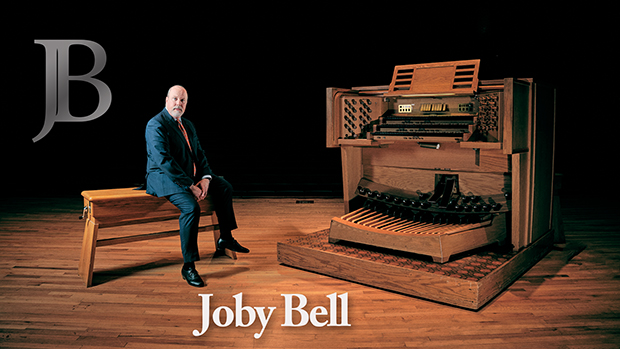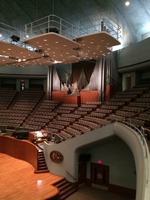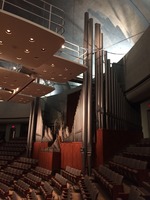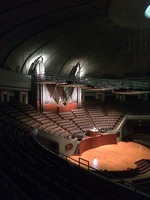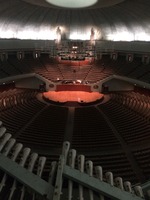Too good to be true?
 Wednesday, February 7, 2018 at 2:04PM
Wednesday, February 7, 2018 at 2:04PM It may be too good to be true, but if my luck holds just once more, then this complete Widor recording series will probably go down as the lowest-maintenance project ever tackled.
I’m just back from recording the next installment of the complete Widor organ works, this time on Aeolian-Skinner Op. 1309 in The Auditorium, Community of Christ International Headquarters in Independence, Missouri.
To bring my readers up to date on how that went, I could just cut and paste from previous posts about first-class hospitality, 24/7 access, epic instruments that have not been heard on commercial recordings, new friends, landmark music on landmark organs, and rep perfectly matched to instrument. In other words, this felt like another triumph for the organs and hopefully for Widor. No horror stories of broken air conditioners or funerals or noisy children running in the hallways. No emergencies. No tuning issues. And only two loose reed tongues, one of which afforded me an interesting trip into the upper parts of the room. We recorded seventeen movements in about as many hours spread luxuriously across three days. This was the easiest work we had done so far, albeit with two of the most colossal Symphonies Widor wrote. The most difficult part was playing all the notes.
My recording projects marinate me in breathtaking rooms with iconic architecture and equally iconic organs in them: St. Philip Presbyterian, Houston (Fritts); St. Mark’s Cathedral, Shreveport (Aeolian-Skinner); First Presbyterian, Houston (Aeolian-Skinner); First Presbyterian, Wilmington, N.C. (E. M. Skinner); Providence Methodist, Charlotte (Aeolian-Skinner). But the two rooms that stop my heart every time I enter them are the Community of Christ Auditorium (Aeolian-Skinner) and First Baptist, Longview, Texas (Aeolian-Skinner). Even something as mundane as a bathroom break is always followed by a stunned hush when I re-enter a space like that and take it all in again. Surely I’m not the only one who basks so readily and gratefully in these spaces; I know I’m not crazy. But if you are of the age (like me), where you missed the heyday of places like The Auditorium, then you crane your proverbial neck to get a glimpse of the history that must have taken place there. Imagine all those broadcasts, all those recitals, all those services. Imagine being there when Catharine Crozier played the inaugural recital in 1959 to a crowd of about 7000 in a room that seats 5800. Imagine filling rooms like that again for organ recitals. And if you are like me, then you can imagine me walking all over the building late at night and poking my head into the other wonderful spaces such as the cafeteria and auditorium downstairs and walking up and down the endless stacks of lobby ramps that take the place of staircases, and in discovering how the organ looks different and stunning from any door one enters (see photos below). Well, I could go on and on. Let’s do dinner sometime, and I’ll keep going.
Our rep this time was Symphonies VIII and IX (Gothique) and the later Trois Nouvelles Pièces. The Eighth is enormous, the most epic organ music composed up to that point: seven movements, 68 pages, about an hour. Then the Gothique represents a brand new capturing of Widor’s imagination, reducing the sheer size of the music to hover around chant melodies, embracing a neo-Baroque style, in four movements at about 35 minutes. Then the three later pieces are beautiful, questioning miniatures – what was Widor trying to say with them, after all he had composed up to that point?
I executed my usual registrational supplements, adding the Swell 8' Geigen to the celeste, and choosing freely between the Cromorne and the Krummhorn here and there. I forsook some of Widor’s coupling instructions in the second movement of the Eighth. And I certainly hope he will forgive me for developing a clearer registration in the Variations movement; I’m sure it sounds splendid in St-Sulpice the way he asks, but I needed more clarity than that here at home! We also re-inserted the extra movement, a Prelude to the Variations, that Widor had removed in later revisions. Admittedly, it doesn’t add much unless you really know what you’re listening for: it is a “melody chorale” based on the Variations theme – completely different meter and tempo but a rather startling segue into the Variations proper. It needs to be there, and history allows us to reinstate it.
Surely the “Scherzo” from the Eighth is the nastiest, most unforgiving thing Widor ever wrote. It nearly did me in. We started the recording session with that one, just to get it out of the way. My producer Keith Weber appreciates the lists I provide him with movements in descending order of difficulty. And he really appreciates some of the colorful words I use to describe those movements, especially the harder ones.
The Symphonie gothique fast became one of my favorite pieces. I just might have to keep that one at the ready from now on for recitals. The Prelude is a grand arch, aching for repose and never quite getting it. The second movement, the ravishing andante sostenuto, sounds completely different when played within the context of its sister movements, rather than excerpted in recital as a slow filler piece (guilty). Oh, but just wait until you hear it – I registered it in ‘surround sound,’ using flutes from the front and antiphonal organs. It swirls all around the room. The third movement, a rather boisterous fugue, is lots of fun; I’m loving it more and more. Then the epic Finale demonstrates the organ best. There are many colors to choose from and lots of wonderful places in this movement to show them off. The grand climax, with the Puer natus chant in pedal octaves, adds the en chamade from the back of the room. Breathtaking. I got to climb up there just before recording sessions to help Chris Emerson from Quimby tighten a loose tongue. Yeah, I took a photo:
Keith Weber, Ryan Edwards, and Shannon Smith were their usual professional selves at work and their usual fun-loving friends otherwise. We all feel that we have hit on something truly beautiful and special with this series, and we all allow our hearts to skip a beat at those times when we hear what this music says on these organs. My friend Patrick Pope, Director of Music at the Church of the Holy Comforter, Charlotte, made the trip during his sabbatical to turn pages and punch an inordinate number of pistons. I hope he had fun. Cara Casey at Community of Christ is the angel of the day. Thanks to her loving attention to all details and patient understanding of what we needed, we emerged victorious and not one bit under duress. Then there is my friend Jan Kraybill, whose support exudes so beautifully from her affirming presence among us. We enjoyed lunch with her on our very last day in town, and I got to play for her the final part of the Gothique while she sat in her favorite seat in the Auditorium and wept. She remembers the heyday years and yearns for them to return. I do, too, and we should all be ready to help when that day approaches.
One more of these, and we'll call it a series. Last up to bat this coming May is the former Kennedy Center Aeolian-Skinner, now lovingly housed in Providence United Methodist Church, Charlotte, where we have already been promised gracious hospitality by Adam Ward and Andrew Pester.
 Joby Bell | tagged
Joby Bell | tagged  Widor recordings
Widor recordings 